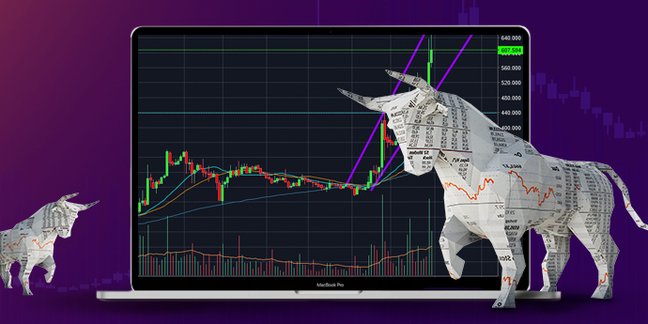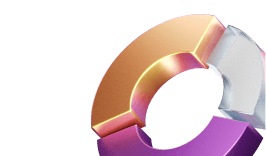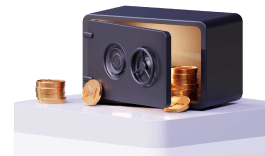5 Most Popular Bullish Types of Candlestick Patterns in 2021
With all candlestick patterns available, traders have multiple opportunities to retrieve vital market data. It is possible to spot and predict market and trend movement, price changes, reversals, pullbacks, and other moves that ensure fast and precise decision-making. The only way to succeed in the financial market is to read these patterns correctly.

Beginners may find it hard to identify true signals. They have to practice market entry and exit depending on the information provided by different candlestick patterns. The best way to pick up these vital skills is to use a demo account and trade under real-market conditions without the risk of losing real funds. Besides, you will need to decide on the trading strategy.
In today's review, we are going to introduce the top 5 bullish types of indicators you may need at any point in your trading.
1. Bullish Hammer Candlestick Pattern
Unlike other reversal indicators such as tweezer top and bottom, the Bullish Hammer takes place in the downtrend or at the bottom of the trend. It is easy to read for newbies, as the pattern consists of a single candlestick with quite a small body and a long lower shadow.
How to identify on the chart:
- The pattern occurs during the existing downtrend.
- Traders should spot a small body located at the upper end of the range. It does not matter what color the body has.
- The long lower shadow should be twice longer as the body.
- The pattern does not have an upper shadow.
Interpretation:
While appearing during the downtrend, it is a sign of a sharp selloff with bears finding it very hard to keep their positions. It means that the price may return to the high of the day. The bullish situation might be even better in case of the pattern red-colored body.
up to 200%

from 0 pips

Trading platform

2. Bullish Belt Hold Candlestick Pattern
Just as the previous one, Belt Hold consists of a single candlestick. It is a long blue pattern also known under the Opening Marubozu name. It has a lower shadow and mainly occurs during the downtrend. It shows the trend reversal with the day-low opening and a rapid rally against the current trend to reach the market high.
How to identify:
- The pattern occurs during the existing downtrend, that characterizes the overall market situation.
- The pattern occurs when the market tries to gap down the low of the day and eventually closes at its high.
- The pattern comes with a long blue-colored body along with the lower shadow.
Interpretation:
Since the market opened at the day’s low, sentiments will make an effort for a rapid change making the market move in the opposite direction. As a result, short-term traders tremble with fear and hurry up to cover their positions resulting in market rallies.
3. Bullish Engulfing Candlestick Pattern
Unlike the previous two patterns, this one consists of two bodies. The first one is a prior small red one. The second body is a longer blue engulfing body. They both appear during the market downtrend.
How to identify:
- The pattern occurs during the existing downtrend, that characterizes the overall market situation.
- The prior smaller red body occurs during the first day.
- The second blue engulfing body is formed on the next day. It totally absorbs the prior body.
Interpretation:
Selling at light volume can be spotted during the first day when the prior body is formed. When the blue pattern is formed, the market opens at a lower level the next day. Selling pressure will soon lose momentum providing control over the market to the bulls during the rest of the day. At this point, the buying force is likely to overcome the selling force.
4. Bullish Harami Candlestick Pattern
To oppose the Engulfing candlestick, the Harami pattern has a large body colored red that occurs on the first day followed by the smaller blue body formed the next day. The prior red body absorbs the blue one and keeps the pattern in its range.
How to identify:
- The pattern occurs during the existing downtrend, that characterizes the overall market situation.
- A prior large red candlestick occurs on the first day.
- A secondary smaller blue candlestick appears on the next day to be absorbed by the primary body.
Interpretation:
A larger red body reflects heavily selling market condition. The price keeps going high the next day as well as keeping short sellers feeling afraid and making them convert short positions. It results in further price growth. This is where the blue body is formed to signalize the trend reversal and benefits for those short sellers who managed to keep it coming. At this point, bearish power is vanishing.
5. Bullish Doji Star Candlestick Pattern
The pattern consists of a single red-colored body that appears with a downward gap when opened the next day witnessing the soon trend reversal.
How to identify:
- The pattern occurs during the existing downtrend, that characterizes the overall market situation.
- The red candlestick occurs on the first day.
- A Doji is formed on the next day to gap down.
Interpretation:
The large red-colored candlestick is used to confirm the market in the downtrend. What’s more, the market closes and opens at the same price level. This is actually how a Doji is formed. At first, bearish sentiments were dominating during the downtrend. However, the situation has changed. A Doji Star formation shows that the balance between bulls and bears has been restored. With bears' sentiments reduced, covering short positions appears to be meaningless.
This material does not contain and should not be construed as containing investment advice, investment recommendations, an offer of or solicitation for any transactions in financial instruments. Before making any investment decisions, you should seek advice from independent financial advisors to ensure you understand the risks.
